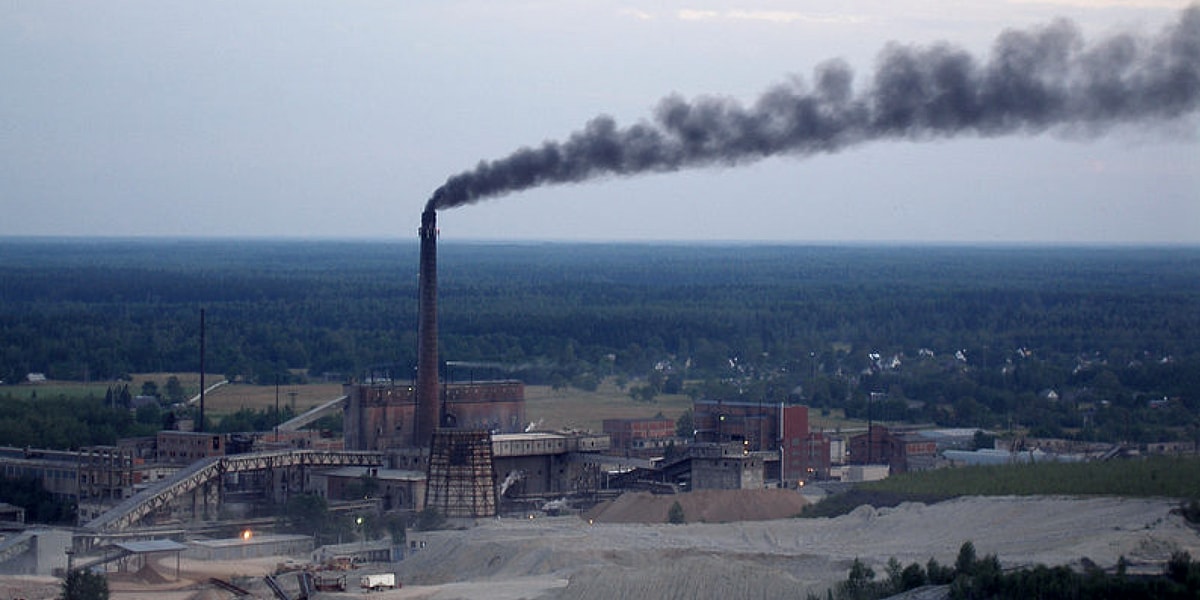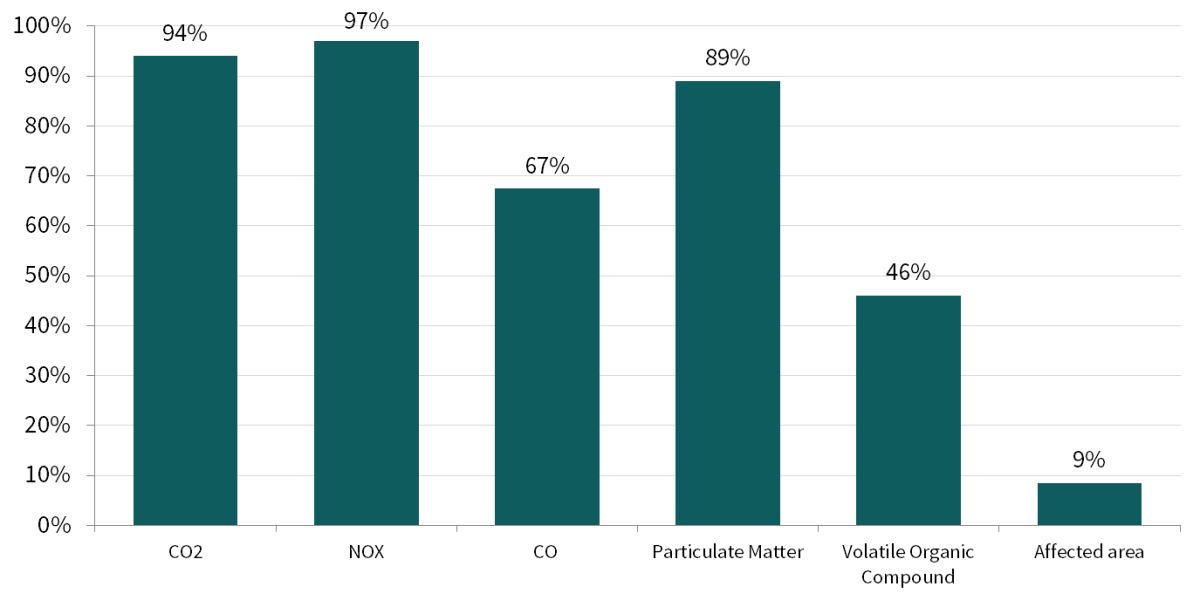
Estonia is the second largest emitter of CO2 per capita in the European Union and by far the most carbon-intensive economy among the OECD countries. The reason for that is oil shale, sedimentary rock that has been mined in Estonia for electricity generation since the fifties and, since recently, have also been used for liquid diesel fuel production.
Over 90 per cent of Estonia’s CO2 emissions come from burning oil shale for electricity, and oil shale contributes significantly to other pollution and waste levels in the country. The high concentrations of pollutants create health problems for local people: children living in the oil shale area have more respiratory diseases and are projected to live four years less on average. The country’s energy development plan 2030 commits to reducing the number of early deaths resulting from pollution by 50 per cent by 2030.
The consultancy firm Praxis has analysed the socio-economic costs of using oil shale, but in doing so has failed to interpret the cost of PM2.5 (particulate matter) air pollution and water usage. When factored in, the total socio-economic cost of producing electricity from oil shale far exceeds the benefits.
The Estonian electricity grid is well connected with the neighbours, and large amounts of oil shale energy are for export. The costs of wasted resources, damage to health, and environmental destruction, however, stay in Estonia. The oil shale industry seems to provide very little economic benefit in exchange for a massive pollution toll.

Flogging a dead horse
The arguments used by politicians defending oil shale industry are energy security, national income, innovation, electricity price, and underemployment in the mining region.
The only valid argument is that the oil shale industry indeed provides lots of jobs – about six thousand people work in mining and energy production. They have relatively high-paying jobs in a region with already high unemployment rates. Associated social problems should be a national priority, and new investments in the region are required to implement a just transition.
With the rising CO2 prices, electricity production is getting very expensive and new renewable energy sources are taking over the market. Solar energy is booming in Estonia and is expected to intensify after 2020 due to the requirements for near-zero energy buildings, but large-scale energy production is hampered by the market situation.
The oil shale industry is heavily subsidised: the industry enjoys exceptional marginal resource and water costs, which allow electricity to be sold below its actual cost.
If oil shale producers needed to pay for the damages caused to human health and environment, then they would probably go out of business.
A subsidy for renewable energy produced to grid amounts to 600 GWh per year, and there are no incentive to build new wind energy projects. The few projects planned by private investors have been stopped by legal battles citing national security concerns, as wind energy farms can reduce radar picture quality.
But even such favourable conditions created by the government are not enough to keep the oil shale business afloat: occasional large capital injections of Estonian and European taxpayers’ money are still required.
Exploiting European money
In 2012, the European Commission approved a grant of 18 million tonnes of free CO2 emissions for a state-owned company Eesti Energia to build a new 300MW oil shale and biomass co-firing electricity plant. At the time of the transaction, with a tonne of CO2 costing approximately EUR 7.5, this concession amounted to roughly EUR 135 million.
The total cost of constructing the plant was EUR 638 million, scheduled to be launched in 2014. As of April 2018, the plant is still not fully operational, as the contractor could not keep the pollution under the required levels. In 2016, the plant was devaluated by EUR 39.6 million.
The originally planned co-firing of 3.4 million cubic meters of wood would represent one third of the total Estonian forest output, and such a sudden increase of wood use would devastate the forests.
Thanks to the strong citizen opposition to massive wood burning, a further devaluation of power plant by EUR 200 million is likely to follow, as the company cannot sell ‘green’ electricity from wood burning.
In another project, in 2014, the European Bank for Reconstruction and Development issued a loan of up to EUR 35 million to finance VKG, the largest producer of liquid fuel from oil shale. The total CO2 savings with this loan have been estimated at 126 000 tonnes per year, but the company has increased CO2 emissions from 801 000 tonnes in 2014 to 1 053 000 tons in 2016.
The company also laid off a hundred people in 2014 and another five hundred – in 2016. This forced the government to further reduce the resource tax on oil-shale, which has been extended until 2019.
Estonia still has not made plans to reduce its use of oil shale. The current oil shale development plan for 2016 – 2030 does not see a need for reducing mining quotas, and the current limit of 20 million tonnes is above the actual mining quantities. The current oil shale plan is to replace the electricity production gradually with liquid fuel production. The new, lowered resource costs are motivating the companies to ramp up production, and a boom in oil shale mining is expected in the upcoming years.
Urgently needed reforms
Estonian Green Movement, a member of Bankwatch, recently presented the national parliament with a proposal for a strategic oil shale exit plan, signed by 1 079 Estonians. The first meeting in the parliament’s environmental commission was held on the 5 June.
All who attended the meeting saw the need for a strategic plan to exit from the oil shale energy era, though this issue has been discussed for the past twenty years with no results. The trade union is also in favour of having a strategic plan that will replace jobs through new investments, but the investments should come in the region before the existing plant closesto avoid hardships for workers. The high unemployment rate is already a problem in the region, and the current regional development plan is not ambitious enough to fully combat the problem. This might become a problem in 2019, when the state-owned energy company Eesti Energia closes three oil shale electric plant blocks built in the seventies.
The required investments for just transition could be provided by the European Union as part of the next Multiannual Financial Framework: most eastern European countries struggle with energy poverty and high emissions in the energy sector.
For example, Cohesion Policy instruments like the European Social Fund or the European Fund for Regional Development could prove instrumental in helping the transformation of Estonia into a much lower carbon-intensive economy. This would help improve the environmental situation in Estonia itself, while supporting the country fulfil its European and international climate pledges.
The transformation from an energy stone age to renewable sources will require a comprehensive plan, political determination and hard work, but the benefits of such endevour will provide a good basis for stable, sustainable, economic growth in the future.
This text was first published on the website of CEE Bankwatch Network.
